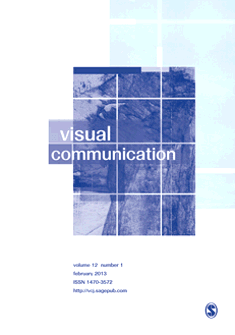
Visual Communication
Scope & Guideline
Advancing Scholarship in Visual Discourse.
Introduction
Aims and Scopes
- Multimodal Analysis:
The journal emphasizes the analysis of communication across multiple modes, including visual, textual, and auditory elements, to understand how they interact and contribute to meaning-making. - Cultural and Social Implications:
Research often explores the cultural and social implications of visual communication, examining how visual representations influence public perception, identity, and social movements. - Innovative Visual Methodologies:
The journal promotes innovative methodologies for visual research, including participatory visual methods and digital storytelling, to engage diverse audiences and capture complex narratives. - Educational Applications:
There is a consistent focus on the role of visual communication in education, particularly how visual literacy can enhance learning processes across various disciplines. - Historical and Theoretical Perspectives:
The journal includes studies that reflect on historical and theoretical aspects of visual communication, contributing to a deeper understanding of its evolution and impact over time.
Trending and Emerging
- Digital and Algorithmic Visuality:
Research focusing on the implications of digital technologies and algorithms in shaping visual communication is on the rise, highlighting concerns about representation, bias, and the impact of social media. - Health Communication and Visuality:
There is an increasing emphasis on how visual communication influences health narratives, particularly in the context of public health campaigns and the visualization of medical information. - Social Movements and Visual Activism:
The journal has seen a surge in studies addressing visual activism, where researchers explore how images are used in social movements to convey messages and mobilize communities. - Interdisciplinary Approaches to Visual Culture:
Emerging themes reflect a growing interest in interdisciplinary methodologies that combine insights from sociology, anthropology, and visual studies to analyze visual culture comprehensively. - Representation and Identity Politics:
Research examining the intersection of visual communication with issues of identity, including gender, race, and migration, is increasingly prominent, reflecting broader societal discussions around representation.
Declining or Waning
- Traditional Media Analysis:
There has been a noticeable decrease in research focused solely on traditional media forms like print journalism, as the journal increasingly prioritizes digital and interactive visual communication. - Static Visual Representations:
Research centered on static images, such as photography without contextual analysis, is becoming less frequent, suggesting a shift towards dynamic and interactive visual forms. - Simplistic Visual Rhetoric:
Studies that analyze visual rhetoric in a simplistic manner, without considering multimodal interactions or cultural contexts, are appearing less frequently, indicating a move towards more complex analyses.
Similar Journals

Visual Studies
Transforming perspectives through critical visual scholarship.Visual Studies, published by Taylor & Francis Ltd, is a leading international journal that serves as a vital platform for interdisciplinary scholarship in the fields of visual arts, cultural studies, and anthropology. Established in 2002 and continuing strong through 2024, it holds impressive rankings including Q1 in Cultural Studies and Visual Arts and Performing Arts, as well as Q2 in Anthropology, reflecting its significant impact and prestige within these disciplines. With a robust Scopus ranking placing it in the 89th percentile for Visual Arts and Performing Arts, this journal does not only publish original research but also fosters rich dialogues on visual culture, representation, and critical theory. Although it is not open access, researchers, practitioners, and students alike can benefit from its rigorous peer-reviewed content, which contributes to advancing knowledge and understanding of visual phenomena. Located in the United Kingdom, Visual Studies continues to shape the conversations surrounding visual practices and their societal implications.

EGA-Revista de Expresion Grafica Arquitectonica
Showcasing Cutting-edge Research in Architecture and Visual ExpressionEGA-Revista de Expresion Grafica Arquitectonica is a premier academic journal published by UNIV POLITECNICA VALENCIA, EDITORIAL UPV, specializing in the fields of architecture and visual arts. This Open Access journal has been a vital resource for scholars since its inception in 2003, facilitating the dissemination of innovative research and practice in these dynamic disciplines. With an exemplary Q2 ranking in Architecture and a stellar Q1 position in Visual Arts and Performing Arts for 2023, EGA exemplifies high standards of scholarly excellence, making it a critical platform for interdisciplinary dialogue. Its impact is further underscored by its Scopus rankings, placing it at the 67th percentile in Visual Arts and Performing Arts and the 41st percentile in Architecture, reflecting its growing influence within the academic community. Designed for researchers, professionals, and students alike, EGA aims to foster insightful exchange and knowledge advancement, thereby enhancing the future of architecture and artistic expression.
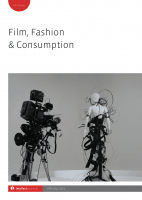
Film Fashion & Consumption
Bridging the Gap Between Fashion, Film, and Cultural InsightFilm Fashion & Consumption is an innovative academic journal published by INTELLECT LTD, focusing on the interdisciplinary exploration of the intertwined domains of film, fashion, and cultural consumption. Established in 2019, this journal has rapidly become a significant platform for scholars, practitioners, and students alike, contributing to critical discussions on how visual culture shapes consumer behaviors and social narratives. With an impact factor reflecting a growing influence in the fields of Communication, Cultural Studies, History, and Visual Arts, it holds respectable positions in its respective quartiles as of 2023. Although it is not an open-access journal, it provides essential insights and research articles that inform and challenge prevailing notions around media and style. The journal's Scopus rankings highlight its relevance, particularly within the realms of Visual Arts and Cultural Studies, making it a valuable resource for anyone engaged in the analysis of contemporary visual trends.

Boletin de Arte-UMA
Illuminating the Intersections of Art and HistoryBoletin de Arte-UMA is a distinguished academic journal published by the University of Malaga, Department of History of Art, focusing on the rich interplay between history, visual arts, and performing arts. Operating under an Open Access model since 2013, this journal ensures that valuable research is freely available for scholars and practitioners worldwide. With an impact factor currently reflecting its academic rigor through its Q2 ranking in History and Q1 ranking in Visual Arts and Performing Arts, Boletin de Arte-UMA serves as a vital platform for cutting-edge research, critical analysis, and the promotion of cultural heritage studies. Based in Malaga, Spain, the journal not only provides insights into its thematic scope but also fosters a global dialogue among researchers, professionals, and students passionate about the visual and performing arts.
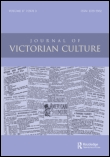
Journal of Victorian Culture
Celebrating the Vibrancy of Victorian Cultural StudiesThe Journal of Victorian Culture, published by Oxford University Press, is an esteemed academic journal that explores the multifaceted cultural landscape of the Victorian era. With a publication history spanning from 1996 to 2024, this journal serves as a critical platform for scholars and practitioners in the fields of Cultural Studies, History, Literature and Literary Theory, and Visual Arts and Performing Arts. It currently holds notable rankings, including Q3 in Cultural Studies and History, and Q2 in Literature, making it a prominent resource in these disciplines. Targeted at an audience that includes dedicated researchers, professionals, and students, the journal promotes interdisciplinary exploration and innovation, encouraging contributors to engage deeply with Victorian themes and their influence on contemporary culture. For those interested in cutting-edge discussions and insights, the Journal of Victorian Culture provides access to rich, scholarly content that is indispensable for understanding the era's impact on modern artistic and social paradigms.
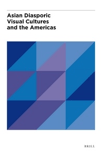
Asian Diasporic Visual Cultures and the Americas
Bridging Cultures: The Art of Asian Diasporas in the AmericasAsian Diasporic Visual Cultures and the Americas is a pioneering journal published by BRILL, dedicated to exploring the intersections of visual culture, identity, and diaspora within the context of the Americas. With an ISSN of 2352-3077 and E-ISSN of 2352-3085, this journal has established itself as a significant resource for academics, researchers, and students interested in the visual arts and their broader social implications. Since its inception in 2015, the journal has been committed to fostering interdisciplinary dialogue, providing a platform for innovative research that examines how Asian diasporic communities express their identities through visual mediums. Despite its relatively recent establishment, it endeavors to challenge and expand the narratives related to visual arts in a diverse and globalized world. Though the journal currently does not offer open access options, it remains a vital asset for those engaged in understanding the critical dynamics of race, ethnicity, and culture in contemporary visual practices. Converging insights from both the arts and social sciences, this journal invites contributions that illuminate the complexities of diasporic experiences, making it a pertinent choice for those aiming to contribute to this evolving field.
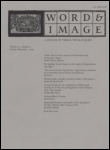
WORD & IMAGE
Unveiling the Complexities of Communication through Art and LanguageWORD & IMAGE is a distinguished journal published by Routledge Journals, Taylor & Francis Ltd, focusing on the dynamic interplay between visual and verbal communication. Established in 1985, this esteemed journal covers a wide array of topics within linguistics, literature, and visual arts, contributing significantly to these interdisciplinary fields. With a commitment to fostering scholarly dialogue and innovation, WORD & IMAGE presents qualitative research, critical analyses, and theoretical explorations that illuminate the complex relationships between text and image. The journal's current impact factor reflects its role in nurturing academic discourse, making it a vital resource for researchers, professionals, and students alike. Although currently not open access, the journal maintains a rigorous peer-review process to ensure the highest academic standards. As it continues to engage a global audience, WORD & IMAGE serves as a key platform for advancing knowledge at the intersection of language and visual culture.

STORIA DELL ARTE
Illuminating Visual Culture Through TimeSTORIA DELL ARTE is a notable journal dedicated to the rich exploration of art history and its varied facets, published by LUCA EDITORI ARTE ROMA. With an ISSN of 0392-4513, this publication serves as a vital resource for researchers, professionals, and students in the fields of Visual Arts and Performing Arts. Although the journal's coverage in Scopus has been discontinued from 2014, it has been recognized in the Scopus ranking as positioned within the 31st percentile among 374 entries in its category, highlighting its relevance in the realm of arts and humanities. While it does not offer open access, the journal's commitment to enriching the discourse on art history makes it an essential read for anyone interested in visual culture and historical contexts. Based in the heart of Rome, at VIA NOVELLA, 22, ROMA 00199 RM, ITALY, STORIA DELL ARTE continues to inspire scholarly discussion and contribute valuable insights to the academic community.

European Journal of Media Art and Photography
Fostering Critical Insights in Media Art.The European Journal of Media Art and Photography (ISSN: 1339-4940), published by UNIV SS CYRIL & METHODIUS TRNAVA, serves as a vital platform for innovative scholarship in the intersection of media, art, and photography. With a focus on contemporary practices and theoretical explorations, this journal aims to advance discourse within these dynamic fields, attracting researchers, practitioners, and students alike. By providing a forum for original research papers, critical essays, and groundbreaking projects, it promotes the exchange of ideas that can influence future trends in art and visual culture. Although specific metrics such as impact factor and H-index are not available, the journal is committed to upholding rigorous academic standards and fostering accessibility in research while encouraging submissions that push the boundaries of traditional media and artistic expression. Located in Slovakia, the journal invites engaging contributions that critically examine the role of media in shaping visual narratives today.

Transnational Screens
Navigating the Dynamic Intersections of Art and CommunicationTransnational Screens is a premier academic journal published by Taylor & Francis Ltd, focusing on the dynamic intersections of visual arts, performing arts, and communication in a globalized context. Since its inception, the journal has garnered significant recognition, featuring in the Q1 category for Visual Arts and Performing Arts and Q3 for Communication as of 2023, reflecting its influential contributions to these fields. With a Scopus ranking placing it in the 78th percentile in Visual Arts and Performing Arts, this journal serves as a vital platform for researchers, professionals, and students aiming to explore the implications of transnational narratives in contemporary media and artistic practices. The journal is accessible to a diverse readership and promotes open dialogue through its commitment to publishing innovative and interdisciplinary research from 2020 to 2024. As a key resource for understanding the complexities of transnational screens, it invites submissions that push the boundaries of traditional scholarship and engage with pressing global issues through the lens of the visual and performing arts.